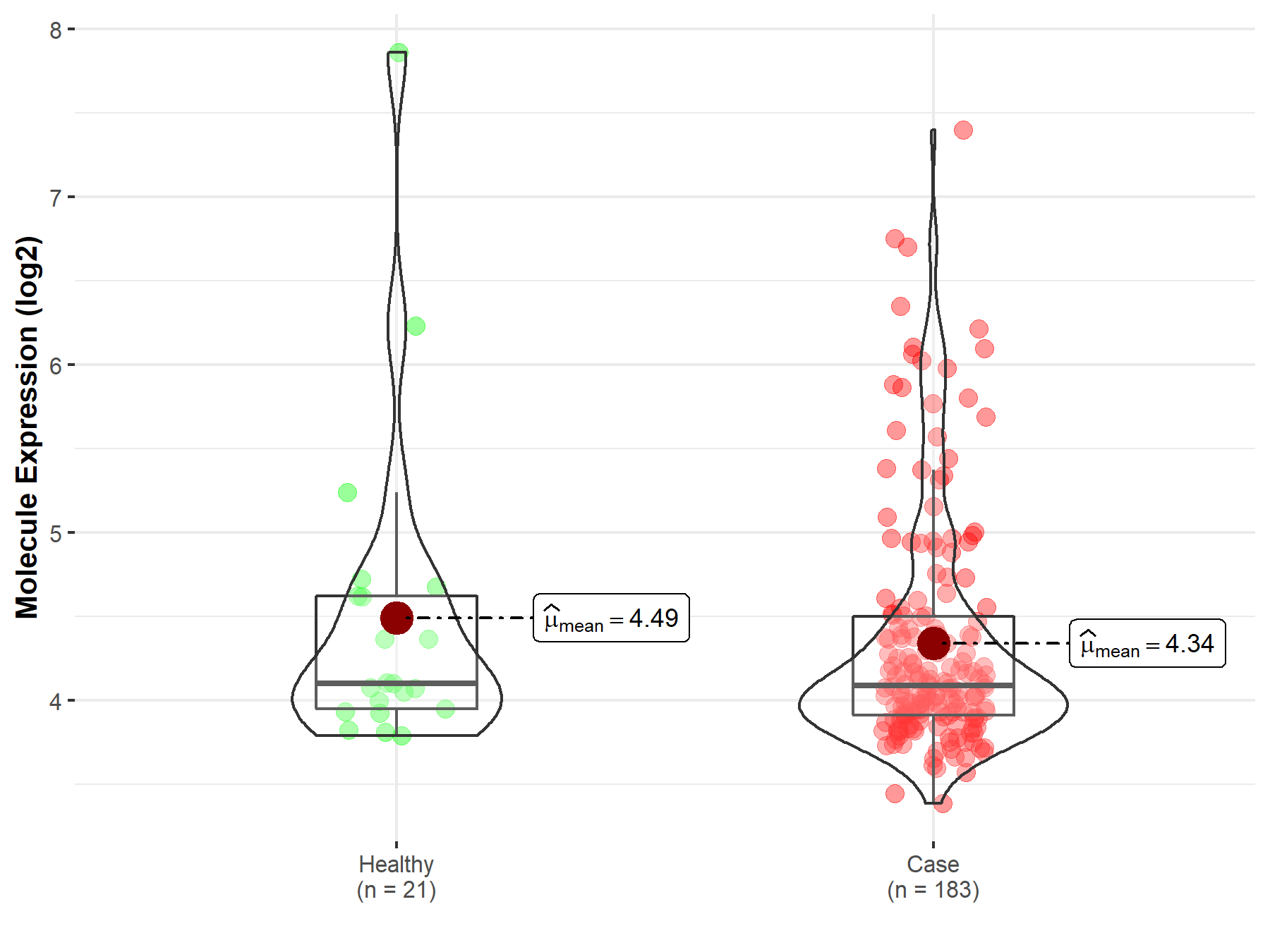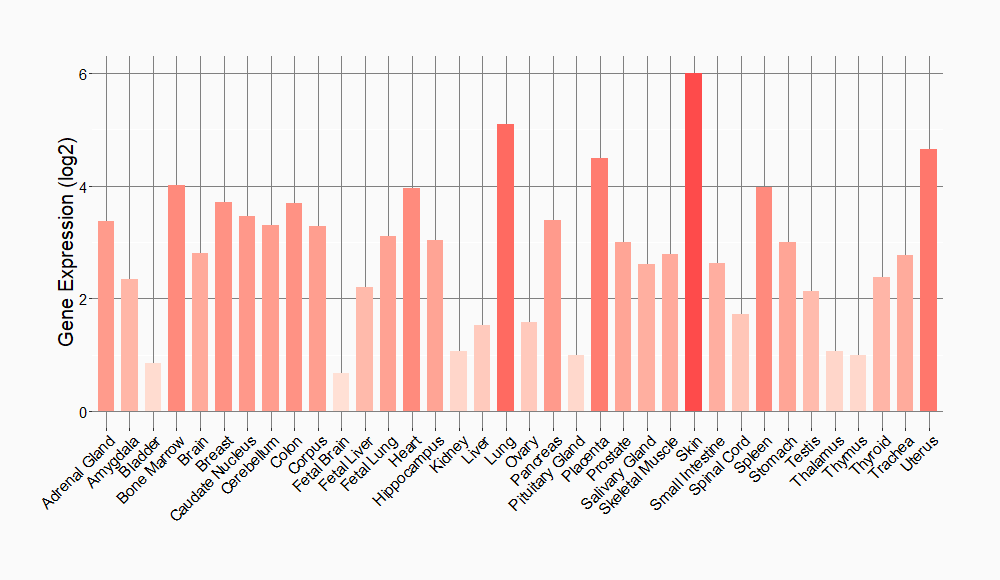Molecule Information
General Information of the Molecule (ID: Mol00354)
| Name |
Proepiregulin (EREG)
,Homo sapiens
|
||||
|---|---|---|---|---|---|
| Synonyms |
EPR
Click to Show/Hide
|
||||
| Molecule Type |
Protein
|
||||
| Gene Name |
EREG
|
||||
| Gene ID | |||||
| Location |
chr4:74365145-74388749[+]
|
||||
| Sequence |
MTAGRRMEMLCAGRVPALLLCLGFHLLQAVLSTTVIPSCIPGESSDNCTALVQTEDNPRV
AQVSITKCSSDMNGYCLHGQCIYLVDMSQNYCRCEVGYTGVRCEHFFLTVHQPLSKEYVA LTVILIILFLITVVGSTYYFCRWYRNRKSKEPKKEYERVTSGDPELPQV Click to Show/Hide
|
||||
| Function |
Ligand of the EGF receptor/EGFR and ERBB4. Stimulates EGFR and ERBB4 tyrosine phosphorylation. Contributes to inflammation, wound healing, tissue repair, and oocyte maturation by regulating angiogenesis and vascular remodeling and by stimulating cell proliferation.
Click to Show/Hide
|
||||
| Uniprot ID | |||||
| Ensembl ID | |||||
| HGNC ID | |||||
| Click to Show/Hide the Complete Species Lineage | |||||
Type(s) of Resistant Mechanism of This Molecule
Drug Resistance Data Categorized by Drug
Clinical Trial Drug(s)
1 drug(s) in total
| Drug Sensitivity Data Categorized by Their Corresponding Mechanisms | ||||
|
|
||||
| Disease Class: Prostate cancer | [1] | |||
| Sensitive Disease | Prostate cancer [ICD-11: 2C82.0] | |||
| Sensitive Drug | Canertinib | |||
| Molecule Alteration | Expression | Up-regulation |
||
| Experimental Note | Revealed Based on the Cell Line Data | |||
| Cell Pathway Regulation | Cell migration | Activation | hsa04670 | |
| Cell proliferation | Activation | hsa05200 | ||
| EGFR/RAS signaling pathway | Activation | hsa01521 | ||
| In Vitro Model | DU-145 cells | Prostate | Homo sapiens (Human) | CVCL_0105 |
| Experiment for Molecule Alteration |
Western blot analysis | |||
| Experiment for Drug Resistance |
Promega assay | |||
| Mechanism Description | The induction of bone metastasis and TkI resistance require miR-203 down-regulation, activation of the EGFR pathway via altered expression of EGFR ligands (EREG and TGFA) and anti-apoptotic proteins (API5, BIRC2, and TRIAP1). Importantly, a sufficient reconstitution of invasiveness and resistance to TkIs treatment was observed in cells transfected with anti-miR-203. In prostate cancer patients, miR-203 levels were inversely correlated with the expression of two EGFR ligands, EREG and TGFA, and an EGFR dependent gene signature. | |||
Investigative Drug(s)
1 drug(s) in total
| Drug Sensitivity Data Categorized by Their Corresponding Mechanisms | ||||
|
|
||||
| Disease Class: Prostate cancer | [1] | |||
| Sensitive Disease | Prostate cancer [ICD-11: 2C82.0] | |||
| Sensitive Drug | Tyrphostin AG-1478 | |||
| Molecule Alteration | Expression | Up-regulation |
||
| Experimental Note | Revealed Based on the Cell Line Data | |||
| Cell Pathway Regulation | Cell migration | Activation | hsa04670 | |
| Cell proliferation | Activation | hsa05200 | ||
| EGFR/RAS signaling pathway | Activation | hsa01521 | ||
| In Vitro Model | DU-145 cells | Prostate | Homo sapiens (Human) | CVCL_0105 |
| Experiment for Molecule Alteration |
Western blot analysis | |||
| Experiment for Drug Resistance |
Promega assay | |||
| Mechanism Description | The induction of bone metastasis and TkI resistance require miR-203 down-regulation, activation of the EGFR pathway via altered expression of EGFR ligands (EREG and TGFA) and anti-apoptotic proteins (API5, BIRC2, and TRIAP1). Importantly, a sufficient reconstitution of invasiveness and resistance to TkIs treatment was observed in cells transfected with anti-miR-203. In prostate cancer patients, miR-203 levels were inversely correlated with the expression of two EGFR ligands, EREG and TGFA, and an EGFR dependent gene signature. | |||
Disease- and Tissue-specific Abundances of This Molecule
ICD Disease Classification 02

| Differential expression of molecule in resistant diseases | ||
| The Studied Tissue | Prostate | |
| The Specified Disease | Prostate cancer | |
| The Expression Level of Disease Section Compare with the Healthy Individual Tissue | p-value: 4.88E-01; Fold-change: -1.12E-02; Z-score: -1.16E-02 | |
|
Molecule expression in the diseased tissue of patients
Molecule expression in the normal tissue of healthy individuals
|
||
| Disease-specific Molecule Abundances |

|
Click to View the Clearer Original Diagram |
Tissue-specific Molecule Abundances in Healthy Individuals


|
||
References
If you find any error in data or bug in web service, please kindly report it to Dr. Sun and Dr. Zhang.
